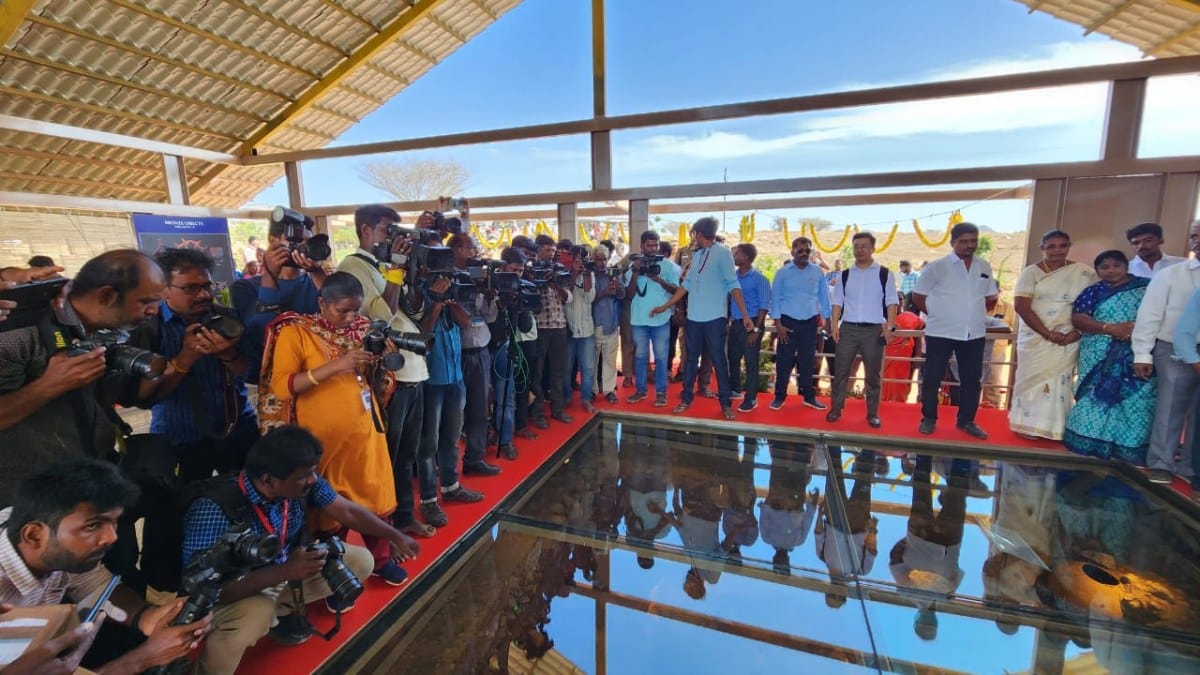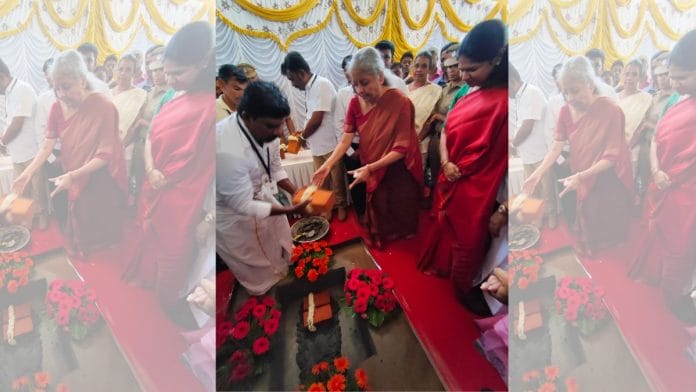Thoothukudi: Union Finance Minister Nirmala Sitharaman laid the foundation stone for a world-class museum at Adichanallur in Thoothukudi district of Tamil Nadu, Saturday.
The museum at Adichanallur, a burial ground for ancient settlers, is a part of the NDA government’s 2020-21 budget proposal to develop archaeological sites as ‘iconic sites’ with world class museums.
The other four iconic sites proposed by the government are Rakhigarhi (Haryana), Hastinapur (Uttar Pradesh), Shivsagar (Assam), and Dholavira (Gujarat).
On the site, the Archaeological Survey of India (ASI) has covered with toughened glass excavated trenches with artefacts dating as far back as 3,800 years. This, according to ASI officials, is a first-of-its-kind initiative in the country which allows visitors to stand by the trenches and view antiquities and urn burials — burials in which pottery vessels are used for the ashes and bones — in situ (as they are, in their place). Europe, China, and Iran already have such museums.

The museum will be located about a kilometre from the site.
Speaking to the media after the inauguration, Sitharaman said the excavation has seen “great progress”.
She added: “The Archaeological Survey of India’s hard work has ensured that we are able to retrieve this site. We are hoping to complete this work at the earliest so that it can be a good tourist attraction.”
The main objective of the museum, Sitharaman’s office said on social media platform X (formerly known as Twitter) Saturday, “would be to focus on establishing the significance of the archaeological sites identified as part of the Cultural Landscape of the Thamirabarani valley, not limited to the site of Adichanallur”.
Apart from excavated artefacts, the building will have display galleries, an audio-visual hall, a souvenir shop, and a cafeteria, apart from administration spaces.
Before the ceremony, Sitharaman inspected the on-site museum along with state Minister for Fisheries, Fishermen Welfare, and Animal Husbandry Anitha R. Radhakrishnan, Thoothukudi Lok Sabha MP Kanimozhi, district officials and ASI officials.
The site, where the excavation work has been underway since 2021, is commonly referred to as ‘Parambu’, meaning a dry elevated mound.
Also read: ‘Not a public spot’ — how board banning ‘non-Hindus’ from Palani temple was reinstated
Excavation on in full swing
Sharing details of the burial site on her own X handle, the minister said, “The extensive urn burial site at Adichanallur was first discovered by Dr. Jagor of Berlin Museum in 1876. Englishman Alexander Rea excavated a good number of urns during the 1910s and discovered gold diadems with parallels from Mycenae, bronze objects, notably lids with exquisite finials depicting many animal forms, iron objects besides thousands of potsherds. The excavation was resumed during 2003-04 and 2004-05.”
‘பறம்பு’ (உயர்ந்த, மேட்டுப்பாங்கான இடம்) என்ற பெயரில் உள்ளூர் மக்களால் ஆதிச்சநல்லூர் களம் அழைக்கப்படுகிறது. களத்தை மேம்படுத்தும் திட்டத்தின் கீழ் இந்தியத் தொல்லியல் துறை, திருச்சி வட்டம் புதிய அகழ்வாராய்ச்சிப் பணியை அங்கே அண்மையில் மேற்கொண்டது. pic.twitter.com/HtCKRfDv1U
— Nirmala Sitharaman Office (@nsitharamanoffc) August 5, 2023
Carbon dating of the samples excavated in 2004 revealed that they belonged to the period between 1000 BC and 600 BC. Around 169 clay urns with human remains were found in 2005 and these dated back to at least 3,800 years, said the minister.
The excavation resumed in 2021, as part of Iconic Site development project. “The entire site/mound has been divided into three localities namely Locality- A, B & C based on the geographic and archaeological features. At locality C, toughened glass has been used in order to preserve the artefacts,” said the minister’s office on X.
According to media reports, in July 2022, a gold object was found on the site. It was later understood to be two broken pieces of a gold earring.
(Edited by Smriti Sinha)






